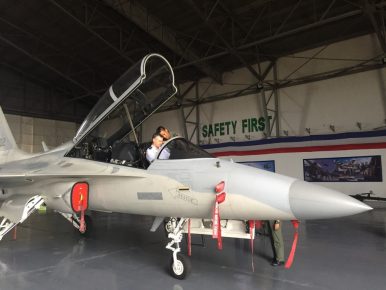Manila is restarting drills that had been discontinued for nearly a quarter-century.

Image Credit: Pacific Air Forces Public Affairs
Late last month, the Philippine Air Force (PAF) revived an air defense exercise that had been discontinued for over 20 years. Though the development is just one of a series of activities within the context of the PAF and the Philippine military more generally, its significance bears noting from both a historical and a contemporary perspective.
As I have noted before in these pages, the PAF, like the other services within the Armed Forces of the Philippines (AFP), has long suffered from a range of limitations and challenges (See: “Where is Philippines Air Force Modernization Under Duterte?”). That said, we have seen some inroads made over the past few years in terms of the modernization of the PAF, with the approval of new projects and the actual realization of some of them, such as the new FA-50 jets bought from South Korea. As this has occurred, we have seen the PAF undertake a series of new moves both domestically as well as in its ties with key regional partners.
An example in this respect at the domestic level is the recent revival of an old air defense exercise. The PAF had begun organizing air defense exercise Sanay Sibat back in the 1990s following the withdrawal of U.S. forces at Clark Air Base and the transfer of exercise Cope Thunder, an exercise sponsored by the Pacific Air Forces, to Eielson Air Force Base in Alaska. But following the last iteration of the exercise in 1995, with F-5 Freedom Fighters and AS-211 aircraft, the exercises were discontinued.
Last month, nearly a quarter of a century later and with its own growing capabilities, the PAF finally moved forward with the revival of this old air defense training exercise. The three-day drills for Sanay Sibat were held over Central Luzon from February 26 to 28, with Clark Air Base in Pampanga as the staging area of the exercise.
Five scenarios were conducted for the exercise, including suppression of enemy air defense, tactical air intercept, and combat air patrol missions. Pilots were grouped into two opposing forces, with the 580th Aircraft Control and Warning Wing and Philippine Air Defense Control Center as the controlling agencies, and flew a total of 61 hours in 29 sorties utilizing FA-50PH and S-211 aircraft.
The revival of the PAF’s air defense exercise was covered in several Philippine media outlets, which noted its significance from a historical perspective. Beyond the symbolism itself, Philippine defense officials also no doubt value the drills as an opportunity to sharpen their skills as well as to identify potential gaps that need to be filled, of which there are many.
To be sure, one ought not to get too carried away with the revival of this exercise. This is just the first iteration following its revival, and it will take some regularization in order for the PAF to see its real benefits. The current plan, officials have said, is to hold the drills semi-annually. And though the PAF’s capabilities have improved in recent years, only getting its modernization carried out on schedule will equip it with the necessary equipment and expertise it needs to actually maximize the value of such engagements. As with many things in the context of Philippine military modernization, positive developments ought to be seen as a good first step in a still long road ahead.
https://thediplomat.com/2018/03/why-the-revival-of-the-philippines-air-force-exercise-matters/

No comments:
Post a Comment
Note: Only a member of this blog may post a comment.